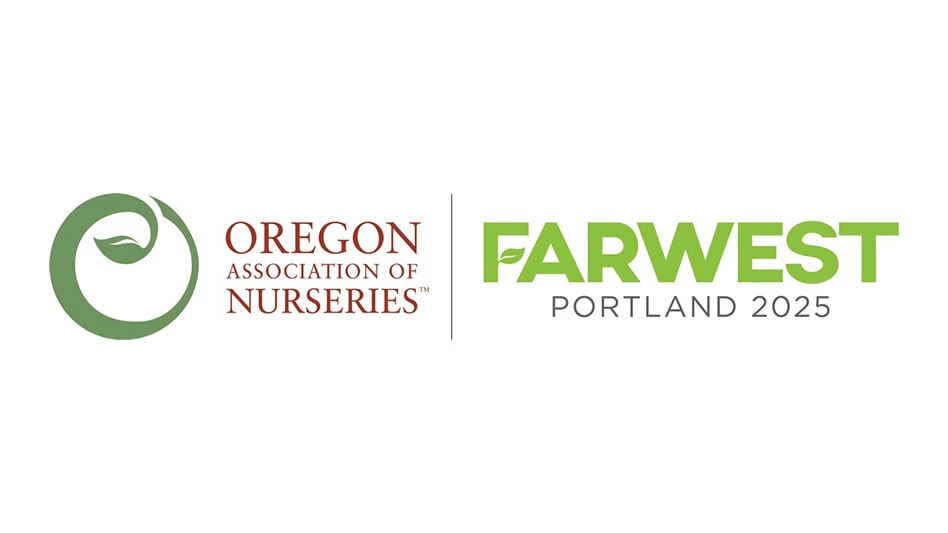|
The expanded production of individual container grown annuals and perennials has brought with it an increase in the use of drip and micro-sprinkler systems. These systems ensure uniformity of irrigation, which in turn helps ensure uniformity of crops. Keeping such systems trouble-free is a matter of maintenance. If your operation is using such systems, here’s what you need to know about the tasks involved. Cleaning filters. The orifice sized small emitter (a few thousandths of an inch) requires that the water be free of particulate matter. For most systems, a 200 mesh filter is recommended. Cleaning should be done when the pressure drop across a screen or disk filter has increased by 3 to 5 psi. Pressure drop can be determined by installing a pressure gauge on each side of the filter. Cleaning can be done by backflushing or manually washing the screen or disks. Flushing supply and lateral lines. Regular flushing of drip system lines is required to prevent clogging from contaminants that pass through the filter. Typical flushing involves removing the end caps at each lateral and turning the water on. Collecting and inspecting the flush water will give an indication of the frequency that is needed. If organic matter is observed, 50 to 100 ppm of chlorine can be injected into the line and allowed to sit for about 24 hours and then thoroughly flushed out. If chemical precipitation is causing the clogging, acid can be injected to lower the pH. It should remain in the line about 24 hours and then flushed. Observation of the operation of the system will determine the frequency of flushing. Depending on the water source, flushing may have to be done as often as every two weeks. Also the laterals should be flushed after a fertilizer or chemical injection. Emitter maintenance. Emitters should be inspected occasionally and flow rate measured. Wide variations are indicative of plugging or water supply problems. A general decrease may be the first symptom of biological or chemical clogging. This problem is easier to treat if it is caught in the early stages. Most micro-sprinklers clog at the orifice in the head and can be cleaned and reinstalled. Most drip emitters are permanently sealed and need to be replace if clogged.
Valves. Electric solenoid valves when attached to a time clock or controller help to make the system automatic. These are frequent sources of trouble due to voltage variations, sticking of the solenoid, and leaky seals. Replacement kits usually contain all the common parts that wear including O-rings, springs, plunger, and diaphragm. Repair is easy and can be done in place. Pressure regulating valves dissipate the upstream pressure to maintain a constant pressure downstream. This may be a large system valve or may be smaller zone valves. They should be inspected frequently to see that they are maintaining the desired pressure, and they may need to be cleaned to remove foreign matter from the adjustment mechanism. Leaks. These are usually the most common problem with drip systems. They frequently occur at pipe connections, compression fittings, end seals, emitter insertions, and hose adapters. Also due to the location, the supply pipes may be damaged from foot or equipment traffic. A supply of repair parts should be kept on hand to handle leak problems. A leak of one drop per second will waste 113 gallons per month and can lead to groundwater contamination, if the water contains fertilizer or pesticides. SummaryUniformity of a crop is partially controlled by the uniformity of irrigation. Drip and micro-sprinkler systems can provide that uniformity. However, they can only accomplish the feat of uniformity if properly installed and maintained.
Bartok is a regular contributor to Greenhouse Management and an agricultural engineer and emeritus extension professor at the University of Connecticut. He is an author, consultant and a certified technical service provider doing greenhouse energy audits for USDA grant programs in New England. Have a question? You can write John at jbartok@rcn.com.
|

Explore the September 2014 Issue
Check out more from this issue and find your next story to read.
Latest from Greenhouse Management
- CEA Alliance celebrates bipartisan introduction of Supporting Innovation in Agriculture Act
- Dümmen Orange North America celebrating 25th anniversary in 2025
- Illinois Landscape Contractors Association changes name to Landscape Illinois
- 2025 Proven Winners Horticulture Scholarship applications now open
- ICL’s Gemini Granular herbicide now registered for use in California
- Eurazeo Planetary Boundaries Fund acquires Bioline AgroSciences
- Spring Meadow Nursery's Freedom Shelley finds joy in plants
- Leading Women of Horticulture: Dana Massey, Plantworks Nursery








